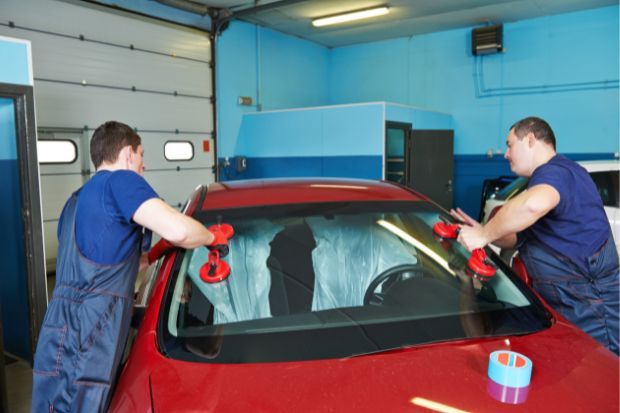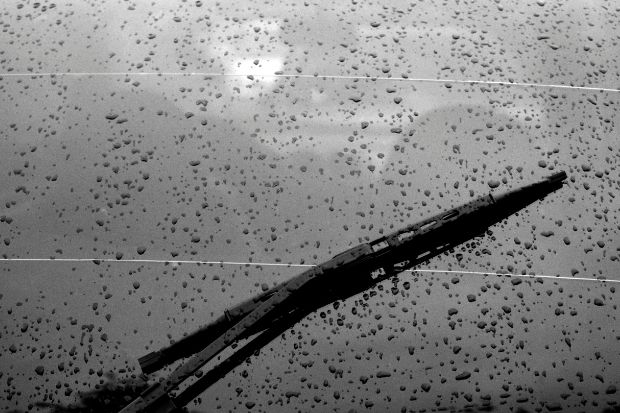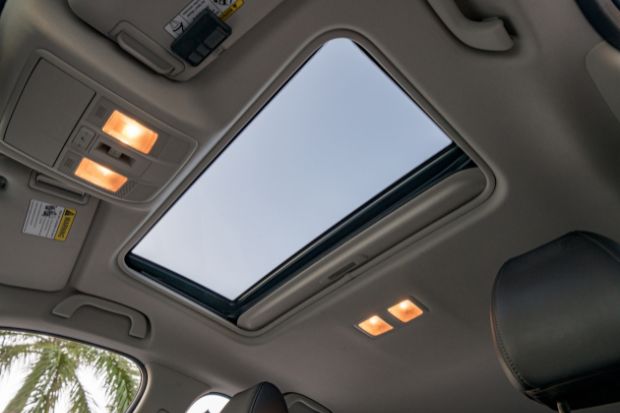Difference between High & Low-Quality Windshields Windshields are a critical...
How are windshields made?

Windshields are an essential part of every vehicle, and they need to meet certain standards before they can be installed. Windshields go through a rigorous manufacturing process before they are installed in vehicles, which includes laminating and tempering the glass, cutting it, inspecting it for defects, adding a heater and adhesive, and finally installing them into vehicles.
1. Laminating and tempering
The first step in making a windshield is to heat the glass and cool it in a kiln. This process is called tempering, and it makes the material stronger than annealed glass (which is not tempered).
2. Cutting the glass
The glass is cut to size, shape, fit, and specifications.
- The glass is cut to the right size. A huge sheet of tempered glass isn’t going to fit into the mold that’s used to make windshields. Before it can be shaped, it needs to be cut down in size using a diamond-tipped blade saw that cuts through glass like butter.
- Glass is cut into specific shapes before being shaped into the final shape of a windshield. The different parts of a windshield have different shapes because they serve different purposes in protecting you from things outside your car (like rocks flying up onto your hood). The tiny pieces that make up each section are all shaped differently so they fit into their designated slots perfectly after they’re molded together during manufacturing.
3. Inspecting the windshield
Once you’ve completed the installation of your windshield, it’s time to inspect it for any flaws.
The windshield is inspected for cracks, damage, and imperfections. If there are no flaws or damage, you can move on to the next step.
4. Applying the adhesive
You’ve already seen the windshield after it’s been pressed into its final shape, but now comes the step of applying a layer of adhesive. The adhesive is applied to both sides of the mold, to each side of the glass, and then over all surfaces on which the glass will be placed. This will help hold everything together and prevent leaks.
Once this has been applied and left to dry overnight, your window is ready for installation!
5. Adding a heater
A heater is applied to the glass in order to reduce the risk of cracking. Heaters are thin metal films that are applied to both sides of the glass, smoothing out the surface and giving it rigidity. The most common heater materials include nickel and stainless steel. Heaters may be applied by hand or machine-applied with a special adhesive.
Windshields go through a rigorous manufacturing process
Before you can drive on the open road, your windshield must complete a rigorous manufacturing process.
- Laminated glass is composed of two pieces of glass bonded together with a layer of plastic. This type of windshield is most commonly used in passenger vehicles, but some commercial and military vehicles also use laminated glass.
- Tempered glass has been strengthened by heat treatment so that it will shatter into small pieces rather than large shards when struck by an impact force or object. Windshields made from this material are usually found on trucks and SUVs, though they’re also used in some passenger cars.
Conclusion
In conclusion, windshields go through a rigorous manufacturing process before they are installed in vehicles. The steps include laminating and tempering the glass, cutting it to size, inspecting it for quality control purposes, applying an adhesive to the inside of the glass, and adding a heater that helps keep it from fogging up on cold days. In addition to being highly durable against impacts from debris such as rocks or other objects thrown at them by drivers who don’t pay attention when passing by parked vehicles at high speeds (which can cause serious injuries), these safety measures allow drivers to see clearly while driving on rainy days without needing wipers which would limit visibility further still due to their inability reach all areas around cars due their limited range of motion when driving.
Read more Articles
10 Best Practices for Sunroof Maintenance
10 Best Practices for Sunroof Maintenance Sunroofs on cars are...
Types of Windshield Glass: A Complete Guide
Types of Windshield Glass: A Complete Guide The windshield of...



